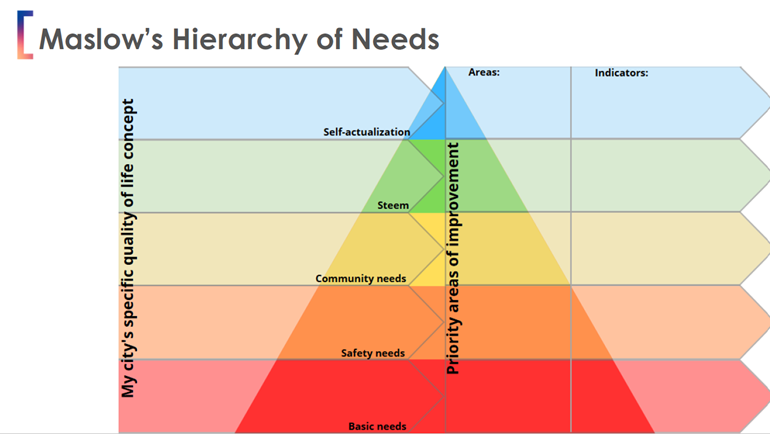Measuring Quality of Life and Designing a Good Monitoring Framework
Quality of life can be measured using a combination of objective and subjective indicators. Some of the main tools and frameworks include:
- Eurostat’s Quality of Life Indicators: Covering 8+1 dimensions such as material conditions, education, health, and environment, these indicators provide a comprehensive picture of urban well-being.
- OECD’s Well-being Framework: A broader approach including aspects like civic engagement, environmental quality, and work-life balance.
- ESPON Quality of Life Measurements and Methodology: an applied research project devising a scientific method to measure territorial quality of life.
- URBACT methodologies and city attractiveness indices: Offering tailored approaches for urban practitioners to assess and improve their cities' competitiveness.
- Local Indicators: Cities need to develop their own monitoring systems, considering their specific challenges and aspirations. Engaging local communities in the process ensures that assessments align with residents' actual needs and priorities.

Maslow’s Hierarchy of Needs Applied to Cities
Applying Maslow’s hierarchy of needs to urban life helps in understanding how different aspects of quality of life interact and contribute to city attractiveness:
• Basic Needs: Affordable housing, clean water, healthcare, and food security are fundamental for urban well-being.
• Safety Needs: Low crime rates, stable employment, resilient infrastructure, and disaster preparedness ensure security and stability.
• Social Needs: Community engagement, cultural activities, accessible public spaces, and social inclusion create a sense of belonging.
• Esteem Needs: Recognition of local identity, investment in education and career opportunities, beauty and appreciation of cultural heritage enhance residents' self-esteem.
• Self-actualisation: A city enabling innovation, creativity, and personal fulfilment fosters dynamic, future-oriented urban communities.
The Hands-on Activity: Applying Maslow’s Hierarchy of Needs
A practical session during the workshop applied Maslow’s Hierarchy of Needs to urban quality of life. Participants received a blank pyramid and 21 cards representing different aspects of urban well-being. They:
- Selected the most relevant aspects for their city’s quality of life and placed them on the left side of the pyramid.
- Identified priority areas for improvement and positioned them on the right side.
- Chose quantitative and qualitative indicators for each priority aspect to build their own monitoring frameworks.
This exercise provided city teams with a structured approach to understanding their urban priorities and developing targeted policies.
Conclusion
Enhancing quality of life is vital for shrinking cities seeking to attract and retain residents. By leveraging strengths, addressing weaknesses, and implementing structured evaluation methods, cities can create more attractive and sustainable urban environments.



